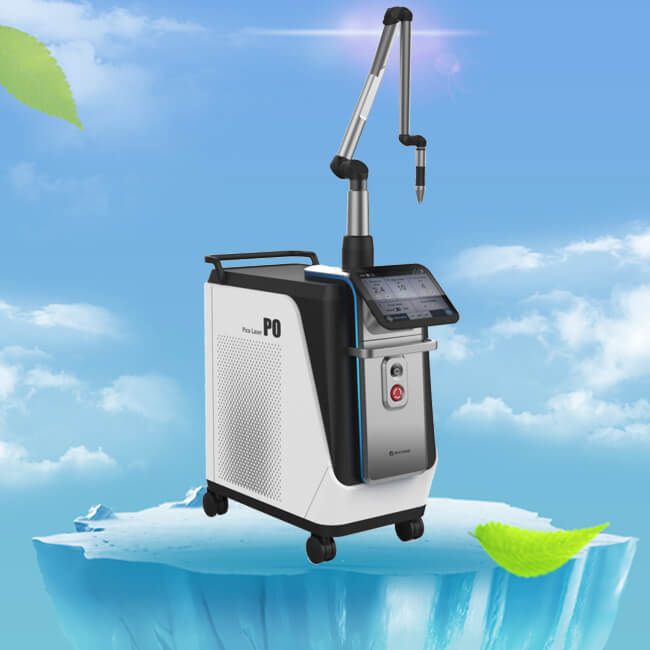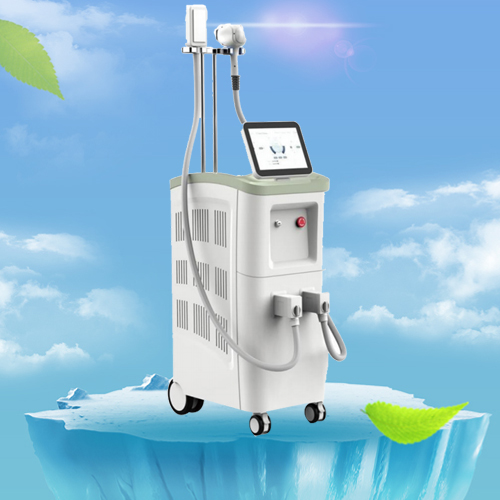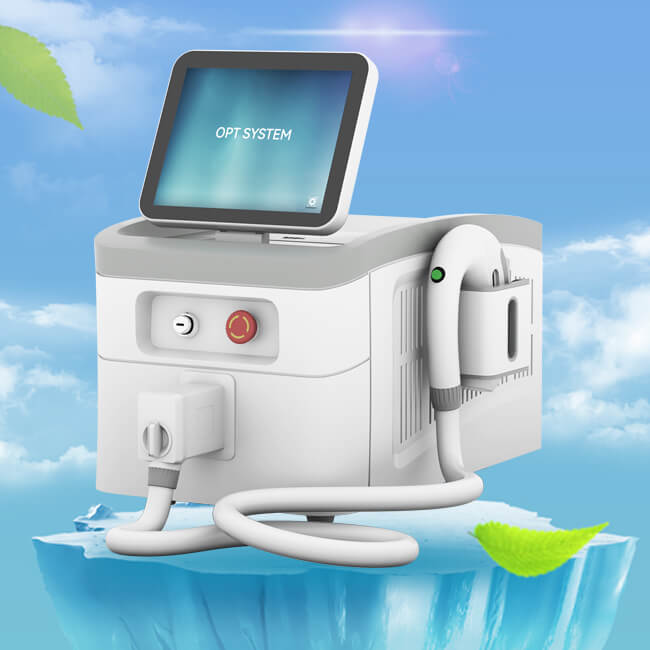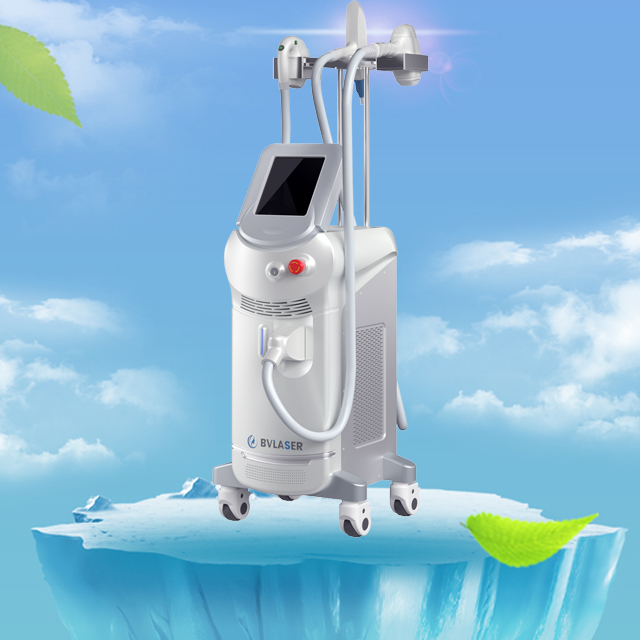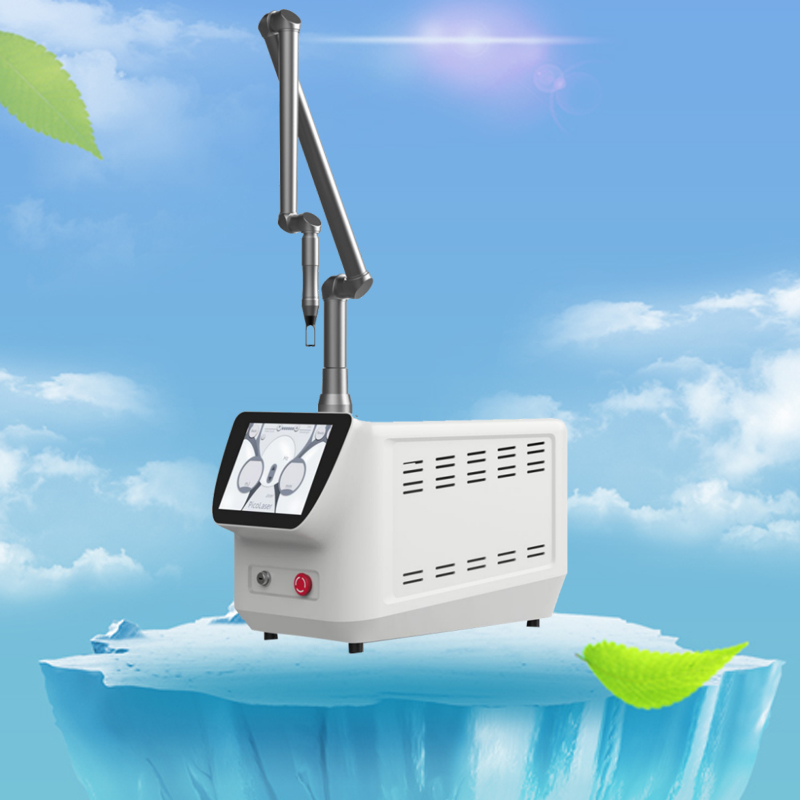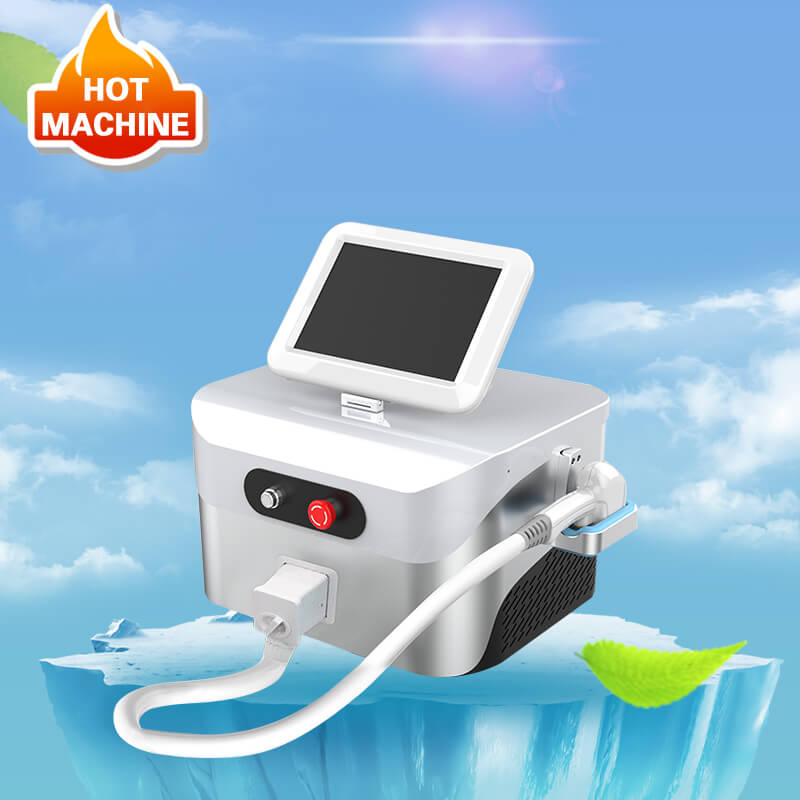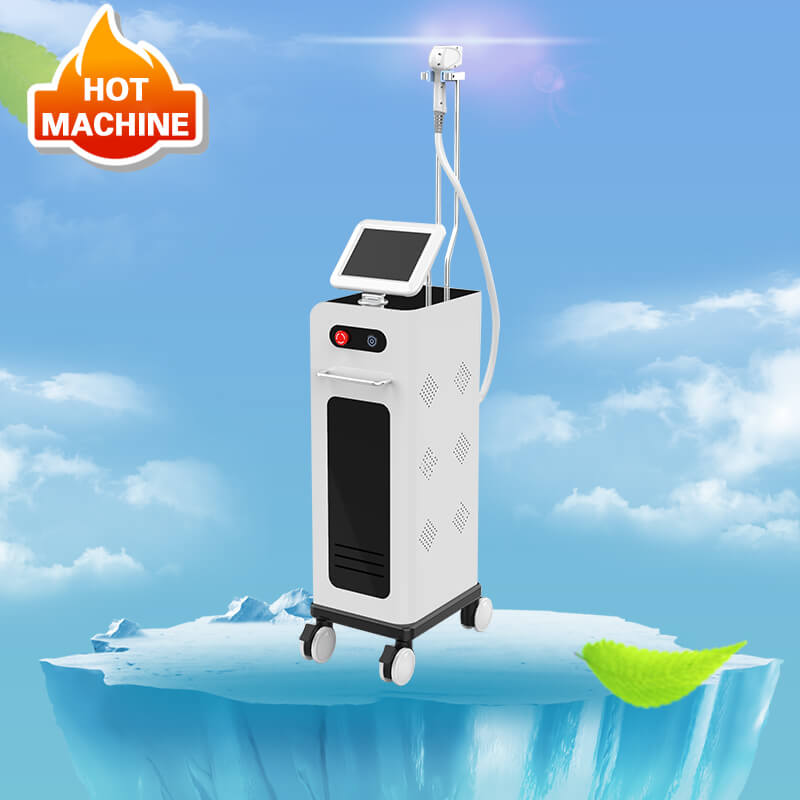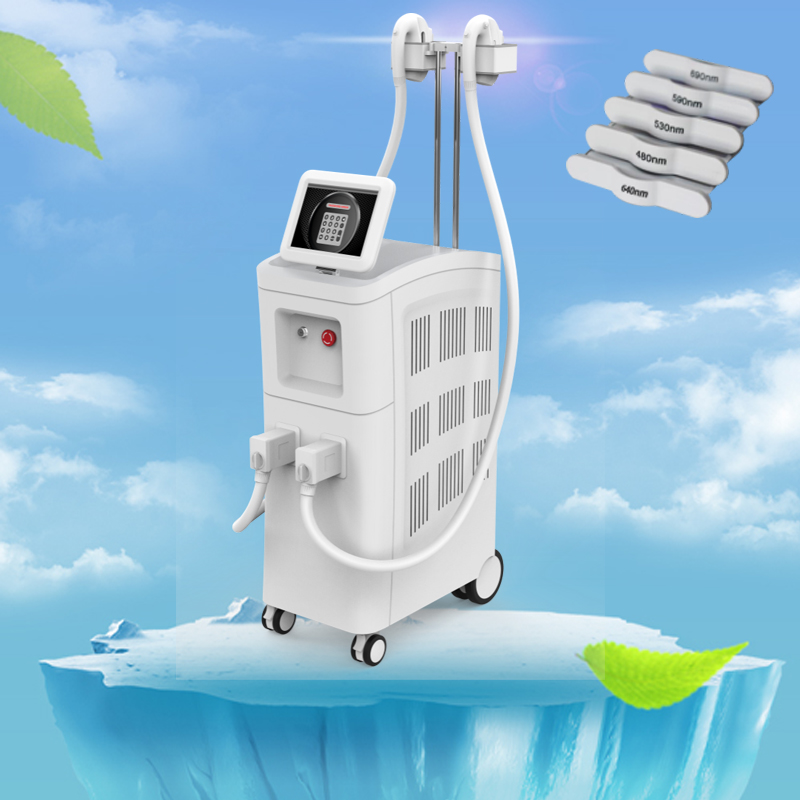Reasons why CO2 laser is the best for skin rejuvenation
Author:baishilf Time:2024-05-20 16:12:44
Signs of aging of the skin can begin in subtle ways, with fine lines, loss of firmness, and pigmentation issues. Treat minor to advanced signs of aging with fractional CO2 laser skin resurfacing. CO2 laser treatment rejuvenates your skin for a brighter, firmer, more youthful appearance.
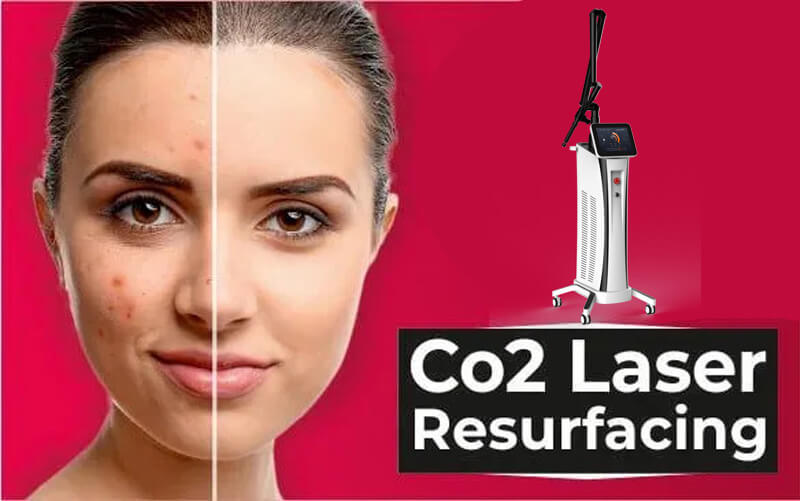
The science behind CO2 fractional laser resurfacing
CO2 fractional laser skin resurfacing is an ablative procedure, meaning tissue is removed during the treatment process. This allows for more effective reduction of harsh skin issues than non-ablative procedures.
During a treatment session, the heat of the laser is used to remove the damaged skin cells in the skin layers. It is powerful enough to travel down to the deeper skin layers. This signals the body to create fresh new skin cells and new collagen protein, resulting in youthful and beautiful skin with improved health, smoothness, and elasticity.
What is fractional CO2 laser skin resurfacing?
CO2 fractional laser machine is among the most powerful tools for skin rejuvenation. Understanding how the CO2 laser treatment works requires knowledge about lasers and their effects on the skin. Simply put, lasers are powerful, narrow-spectrum light beams. In dermatology, carbon dioxide laser, aka “CO2 laser,” is invisible, far-infrared light with a length of 10,600 nanometers generated from carbon dioxide. Water molecules selectively and highly absorb light of such a wavelength.
The epidermis—the topmost layer of the skin is sensitive to CO2 laser beams. When CO2 lasers hit the skin, the energy heats up and vaporizes epidermal water molecules and, with them, the epidermal cells. In the hands of a skilled laser dermatologist, CO2 lasers can strip off the epidermis with minimal damage to underlying tissues. The CO2 laser is an ablative laser because it removes the skin’s superficial layers.
How does CO2 laser skin resurfacing work?
During CO2 fractional laser skin resurfacing, a laser delivers precisely controlled energy to the skin. The term “fractional” indicates that instead of treating the entire skin surface, the laser creates a pattern of controlled micro-damage. The laser creates thousands of tiny columns in the skin that trigger your body’s collagen production. The new collagen helps smooth wrinkles and fine lines, improves firmness, and provides a brighter, more even tone.
How often should get fractional CO2 laser skin resurfacing?
The frequency of CO2 fractional laser skin resurfacing depends on the individual’s skin and desired results. Some people may see results after just one treatment, while others may need multiple treatments to achieve their desired results. Typically, most people will see optimal results after 2 to 3 treatments. In general, higher power CO2 laser skin resurfacing may require only one treatment but several days of downtime. A lighter, more superficial treatment may require several treatments, but each will have minimal downtime.
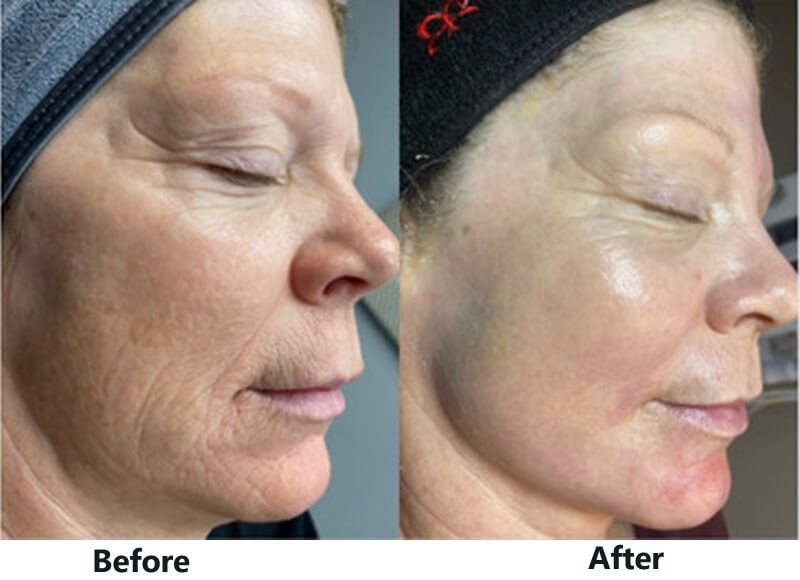
Ideal candidates for CO2 fractional laser resurfacing
CO2 fractional laser resurfacing works for people who want to reduce the appearance of fine lines, scarring, pigmentation, age spots, sagging skin, warts, and sun damage. Dermatologists also recommend it to patients with non-responsive skin after a facelift.
However, CO2 fractional laser resurfacing might not be ideal for people who have taken the acne medication isotretinoin for the past year and those with keloid scars. It is not recommended for people who have undergone laser resurfacing before, have a weaker immune system, have undergone radiation therapy on their face, or are at high risk of getting cold sores.
The benefits of CO2 fractional laser resurfacing
Unlike surgical procedures such as facelifts, CO2 fractional laser resurfacing treatment will not require several weeks of painful recovery time and carries a lower risk of complications. No scalpels are needed and no incisions will be made.
Unlike other ablative laser treatments, CO2 fractional laser resurfacing does not remove the entirety of the skin layer. It is fractional, meaning several microscopic sections of skin cells are removed from the skin layer. The undamaged sections of skin can then work to heal the damage more effectively. Fractional procedures result in a shorter and more comfortable recovery time.
Knowing how CO2 laser treatment works makes it easier to appreciate its upsides, the most important of which are the following:
1.Superior Cosmetic Results
CO2 laser resurfacing treatment is considered the gold standard for rejuvenating photoaged skin. Its cosmetic outcomes are superior to non-ablative procedures like Vbeam and intense pulsed light. Experts attribute this to its greater ability to induce the skin’s healing response and tighten loose collagen strands. CO2 fractional laser resurfacing yields comparable results to the non-fractional technique, but it has the advantage of having an easier recovery period.
2.Great for Multiple Skin Lesions
Clustered skin lesions like wrinkles and acne scars are tough to treat by incisions because they have a greater risk of complications. By comparison, lasers are precise surgical tools. A highly experienced laser dermatologist can easily avoid normal skin tissue and remove multiple lesions safely.
3.Highly Effective Against Severe Skin Issues
A gentler skin treatment like a night cream or microdermabrasion won’t have any effect on deeper wrinkles and scars. They do not penetrate the skin deeply enough or stimulate a response in the inner skin layers. Meanwhile, CO2 laser treatment not only peels away visible lesions but also kickstarts repair mechanisms, effectively improving skin texture and tone.
4.Longer-Lasting Cosmetic Effects
One of the best things about CO2 laser treatments is that they get rid of skin lesions for good, but you must address the underlying cause. Religious skin care and sun protection keep the skin lesions from coming back after this procedure.
5.Fewer Sessions
CO2 fractional laser treatments produce dramatic changes. Most patients need only one session to see results unless the lesions are widespread or they respond poorly. Consider this procedure, if you have a busy schedule.
Additionally, if you have a complex skin condition, you can safely combine CO2 laser resurfacing with other procedures. For best results, entrust your skin treatments only to a highly experienced, board-certified dermatologist.
Reasons why CO2 laser is the best for skin rejuvenation
Many people start their skincare journey with cosmetic products. They’re easy to use, have tolerable or no side effects, and make us feel good overall. However, they take time to work and address only mild skin issues. Additionally, some become ineffective when the skin changes faster than you can treat it.
One of the most sought-after is CO2 laser skin resurfacing and for a number of good reasons. This article discusses the benefits of CO2 laser treatment. It also explains how CO2 laser resurfacing works and what to expect from the process.
The following events occur after CO2 laser treatment:
1.Removing the epidermis takes away its imperfections. They include wrinkles, rough areas, pigmentation problems, and superficial scars.
2.The intense laser heat burns away damaged collagen strands and contracts loose collagenous tissue.
Stripping off the skin’s top surface alerts the immune system and stimulates inflammatory processes. These events lead to the release of substances that induce the body’s natural repair mechanisms. During the healing process, the epidermal cells grow back and the skin produces more collagen. The deeper skin layers also undergo repair and renewal.
So at the end of your recovery, you’ll notice the following changes:
1.The superficial blemishes are gone, while the deep ones are significantly reduced.
2.The treated area becomes smoother as the new epidermis replaces the old one.
3.The skin is tighter and firmer due to the contraction and enhanced formation of collagen.
Overall, you get younger-looking, more even-toned skin that you can’t have from years of applying cosmetic products alone.
What can you expect during your CO2 laser treatment journey?
During your initial consultation, your skin care specialist will give you a complete medical evaluation to see if this procedure is right for you. If they think you’re a suitable CO2 laser treatment candidate, they’ll schedule you for an appointment. Your specialist will also give recommendations to prepare for your session.
Before Your Session:
Good preparation is crucial in preventing complications after the procedure. Your laser dermatologist may advise the following:
1.Stop skin-sensitizing treatments that increase your risk of laser burns. They include hydroxy acids, oral isotretinoin (Accutane), and some acne antibiotics like minocycline.
2.Avoid drugs and supplements that can interfere with the wound-healing process. They include blood thinners, ibuprofen and similar painkillers, steroids, vitamin E, and many others.
3.Abstain from smoking and drinking, which can also disrupt the skin’s repair mechanisms.
4.Start using sun protection regularly. Avoid tanning beds and sun exposure, which increase the risk of post-inflammatory hyperpigmentation (PIH).
5.Take a cold sore medication, as the procedure can trigger a relapse.
6.A few weeks of topical tretinoin or hydroquinone pre-treatment to help speed up recovery and prevent PIH.
7.Cleanse your face and leave it makeup-free before coming in for your appointment.
During Your Session:
At the start of your procedure, your specialist will ask you to change into a comfortable patient gown and wear eye protectors. Once you get settled down, they will use numbing medication in the treatment area. After about 30 minutes, they will apply the laser in pulses.
After Your Session:
Once done, your specialist will clean up the treated skin and apply a thick layer of ointment to it. In some cases, they may use an airtight dressing to protect the area. The downtime depends on the procedure and the extent of the treatment area. Non-fractional CO2 laser treatments result in significant inflammation. The skin heals in one or two weeks, but some patients may experience redness lasting several weeks to months. By comparison, the recovery after fractional laser resurfacing ranges only from four to ten days due to less inflammation.
Aftercare:
Post-treatment care regimens after CO2 laser treatments widely vary among practitioners. Yours may recommend the following:
1.Remove any dressings after 24 hours. Replace as instructed.
2.Cleanse the treated skin twice daily or as instructed. If you’re not advised to dress it, you must keep it moist with a thick layer of ointment throughout the day to prevent scabbing. Do this until the skin closes up.
3.Some practitioners advise vinegar soaks several times a day while the skin has not healed over. Doing so protects the area from microbes. Others choose to prescribe an oral antimicrobial as an alternative.
4.Protect the skin from trauma, pressure, and irritants while it’s actively healing. Skin under repair is highly irritable and may scar or develop pigmentation problems if without protection.
5.For pain relief, you may apply ice packs throughout the day or take acetaminophen.
6.Sleep with your head upright in the first few nights after your session. This prevents swelling, oozing and heavy pressure on the treated area.
7.Use hats and other physical forms of sun protection in the first three or four weeks after the procedure. Once the skin heals fully, you may start applying a gentle sunscreen formulation.
8.Avoid alcohol and cigarettes while the skin hasn’t completely closed up.
9.You may start using mineral makeup a week after the skin heals or as advised by your specialist.
Follow your dermatologist’s aftercare instructions meticulously to avoid complications and speed up your recovery.
Timeline of skin changes after CO2 laser skin resurfacing
In the first few days after your procedure, you will notice inflammation of the area. This is a normal part of the healing process, though it can be uncomfortable. Remember that the treated skin has no protective barrier at this time. The typical symptoms are burning pain, redness, and swelling, which will go away spontaneously. Skin repair begins at the end of this phase.
After a week or two, the skin will close up in a process called “re-epithelialization.” You will see the epidermis growing back, completely covering the treatment site. Collagen production begins to pick up as soon as the repair process starts. It will peak in the third month, by which time you will see a significant improvement in skin texture. Sagging areas and other skin imperfections will continue to improve for several months up to a year due to sustained collagen remodeling.
Risk of CO2 laser resurfacing
No treatment is completely risk-free, no matter how good the outcomes are. In the case of CO2 laser surgery, the most common side effects are swelling, pain, and redness, which are all normal reactions to the procedure. As previously mentioned, these symptoms will resolve on their own after a few days.
The following are some of its possible complications:
1.Laser burns—may occur if the equipment is not set up properly or the patient has overly sensitive skin.
2.Acne and small, white lumps called “milia”—develop as a reaction to dressings and ointments.
3.Contact dermatitis—manifests as an itchy rash that forms in reaction to cleansers, moisturizers, and topical medications used during recovery.
4.Persistent redness—prolonged inflammation that can occur when the wrong laser settings are used.
5.Pigmentation problems—patients with darker skin tones are more prone to PIH. Hypopigmentation has also been observed in some individuals.
6.Infection—either bacterial, fungal, or viral. Treated skin doesn’t have an intact barrier during the active healing phase and is vulnerable to microbes.
7.Scarring—may occur in susceptible individuals or when the provider doesn’t perform the procedure properly.
8.Aggravation of lower eyelid surgery—the eyes’ supporting structures weaken after blepharoplasty (eyelid surgery). CO2 laser treatment near the area can worsen it.
9.Visual problems—may occur if the eyes are not protected during the procedure.
The contraindications of CO2 laser treatment include the following:
1.Active infection or inflammation in the treatment site.
2.Ongoing oral isotretinoin therapy.
3.A history of bad scarring.
4.Skin of color with a positive CO2 laser spot test and is, thus, PIH-prone.
5.Conditions associated with poor healing, such as collagen disease, diabetes mellitus, immune problems, malnutrition, and others.
6.Recent UV exposure or chemical peel.
You can minimize these risks by following the pre- and post-treatment recommendations carefully and choosing a bona fide laser expert to perform your procedure.





